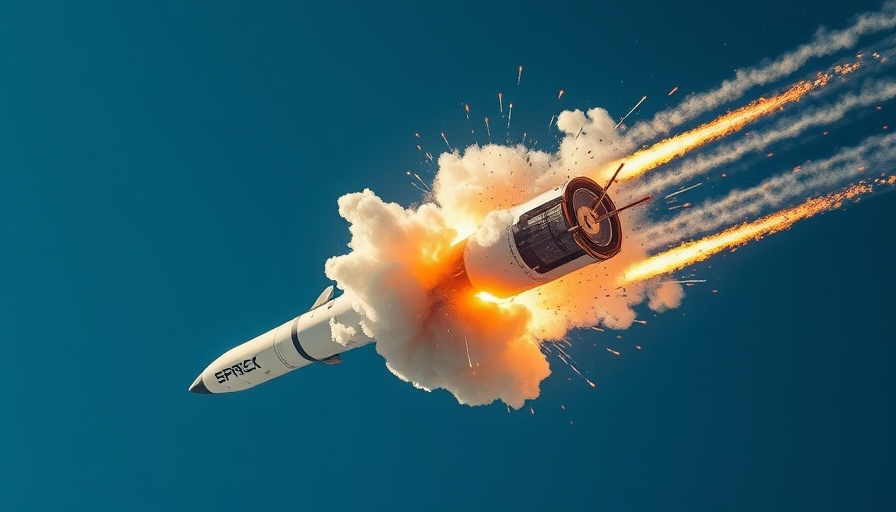
SpaceX's Rocky Road: Another Test Flight Ends in Failure
In a staggering setback for SpaceX, the Starship spacecraft faced a catastrophic malfunction during its eighth test flight, leading the company to confront yet another instance of what they term a "rapid unscheduled disassembly." Launched from Texas, the upper stage of this monumental rocket exploded shortly after liftoff, raining debris across the Caribbean and disrupting air traffic across the eastern United States. This incident serves as a stark reminder of the challenges inherent in ambitious space exploration.
The Dynamics of Operation: Understanding the Test Flight
The Starship, designed to be the most powerful rocket ever built, is essential for Elon Musk's vision of colonizing Mars. At 403 feet tall, it is nearly 100 feet taller than the Statue of Liberty. However, the recent failure marks the second consecutive unsuccessful test flight, raising eyebrows regarding SpaceX's operational strategy and safety protocols. As the spacecraft entered its ascent, a malfunction in several engines caused the vehicle to spiral out of control, ultimately leading to the loss of communications with ground control.
The Ripple Effects: Impact on Air Traffic and Beyond
As debris rained down, flights at multiple Florida airports, including Miami, Orlando, and Palm Beach, were suspended, extending as far as Philadelphia. The incident echoed a previous test flight earlier this year that resulted in significant property damage in the Caribbean, leading the Federal Aviation Administration (FAA) to implement groundings and safety alerts for air traffic. SpaceX emphasizes their commitment to safety, stating that they will conduct thorough data reviews to identify the root causes of such malfunctions and improve future flight reliability.
Learning from Mistakes: The Path Forward
Despite the setbacks, space exploration is often characterized by trial and error. SpaceX's leadership believes every failure provides critical insights which can be used to enhance the reliability of future missions. "As always, success comes from what we learn, and today's flight will offer additional lessons to improve Starship's reliability," the company stated. This perspective underlines the essential nature of resilience in the face of adversity, a principle that is crucial not only in technological advancements but also in everyday life.
Community Reactions to SpaceX’s Launch Failures
Local communities have expressed their concerns following the repeated failures. With reports ranging from near misses to debris sighting over populated areas, residents are understandably anxious. Communication from SpaceX regarding debris safety and tracking has been crucial, and the company has committed to notifying the public promptly through various channels.
Looking Ahead: What’s Next for SpaceX?
As SpaceX navigates through this turbulent phase, the future of the Starship initiative will depend heavily on both technical and public trust. Musk’s plans are grand; they include not just a mission to Mars but also potential lunar landings as a part of NASA's Artemis program. It is in this interstice of hope and skepticism that the journey to human space travel will continue to unfold, relying on steadfast ingenuity and robust safety measures.
The dreams of interplanetary travel are profoundly exciting, but with that excitement comes the responsibility of ensuring safety and transparency at each stage of development. It’s not just about reaching the stars; it’s also about keeping the Earth below safe.
Final Thoughts: The Bigger Picture of Space Exploration
The challenges faced by SpaceX highlight not just the risks associated with innovation in aerospace but also the unyielding human spirit to push boundaries. As the company embarks on this journey, it reminds us all that with every ascent into the unknown, lessons will be learned, and progress will continue to shape the future of space exploration.
 Add Element
Add Element  Add Row
Add Row 



Write A Comment